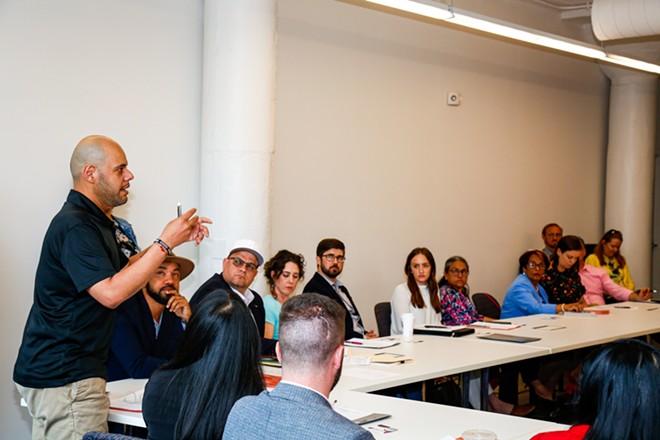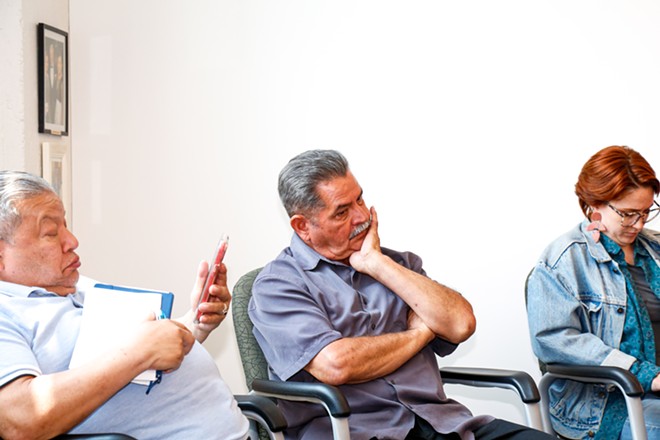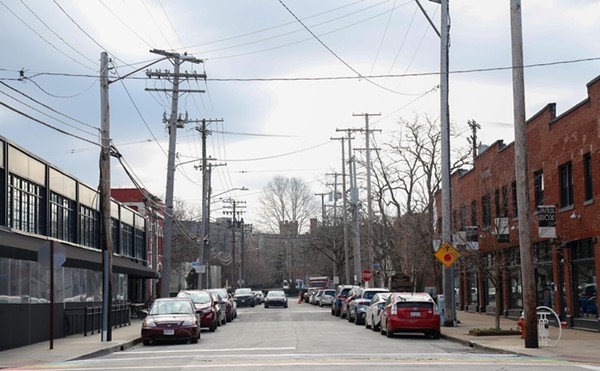
It is, many said, especially timely as an incoming surge of Latin American migrants are expected to arrive in Cleveland in the coming months and leaders of local immigration groups say there are clear gaps in service and concerns about housing.
Santana also emphasized that Cleveland should be in the business of attracting immigrants.
“I want everyone, beyond the social service organizations that are helping but stretched beyond their capacity, to discuss how to create a more coordinated Immigrant/Newcomer plan,” Santana said. “We talk a lot about the decline in population or the lack of capacity in the construction field and manufacturing companies yet we don't take advantage of this great opportunity to train, place, and assist the immigrant population.'
On May 11th, Title 42, a Trump-era immigration stopper intended to curb the spread of Covid-19, ended, thus encouraging a mass wave of migrants escaping dire living conditions in their home countries. Nearly two-thirds of the "tens of thousands" entering the U.S.'s southern border, the New York Times found, are Venezuelan.
In Cleveland, feelings of unreadiness were met with strict calls to action, from Guatemalan pastors to Dominican social club reps, healthcare specialists to social workers to Cuyahoga County Executive Chris Ronayne. Throughout every speech was the sense that the 1,400 projected to arrive in the city in the coming months won't be able to get basic health services, or may be without a bed.
Brian Upton, director of Building Hope in the City, said that current federal immigration system, which has just adjusted to the Ukrainian and Afghan asylees, is not fully in synch with migrant strategies in cities like Cleveland.

While the aforementioned war-traumatized do receive federal benefits, like SNAP and Medicaid, those coming in from Venezuela, for example, will not. Which is key, Upton noted, when mental health upkeep is urgent.
"The arrival now of parolees from Cuba, Haiti, Venezuela and Nicaragua is changing the game on us," Upton told the room. "It's moving the map. That's why we're having this meeting today."
Upton, like several in the room Thursday, took the opportunity to criticize the city of Cleveland's lagging position on immigration. Mentions of Toronto, New York and Philadelphia, all cities with larger immigrant populations, were used as signals to where Cleveland should be, but isn't.
In 2021, RSC performed a secondary refugee migration study which showed that Cleveland's refugee population relocating from first-stop cities—like in Pennsylvania or Houston—grew by 5,300 in the past decade. The study showed, as Upton recalled, that attracting migrants helped grow the tax base more so than strain it.
"We were dispelling myths that these people are takers, that they're using up public benefits," Upton said. "That all the common nonsense that we hear. This was actual data that proved the opposite."
At the federal level, there is a strain on all levels of migrant intake right now. Immigration attorneys, like those at Legal Aid, often have tense deadlines that conflict with, say, a family of five's dire hunt for an apartment, or a single mother's leap to prove her identity.
In Clark-Fulton, which hosts the largest Puerto Rican population in Ohio, such a backlog is well-known to both Santana and her constituents, many who recall the horror of Hurricane Maria's displacement. There is a need for more capital for housing, services, and everything else a newly arrived immigrant needs. And the scattershot service network — non-profits, churches, some government agencies — could be improved.
"We've done some things, but it's just been a kind of knee jerk reaction to the needs," Max Rodas, director of the Nueva Luz Urban Resource Center, said.
Rodas, an American citizen born in Central America, said he's known anecdotally about RSC's data for years before it was published.
"If you go all the way to the bottom [of the data chart]," Rodas said, pointing to the Powerpoint in the front of the room, "Venezuelans are at the bottom of the totem pole."
He added, "What's coming is a tsunami."
Many left Wednesday's meeting with tones suggesting hard work to be done. Ronayne, following a promise he made in 2022, vowed to finally create an Office of International Services at the county level. Melaak Rashid, a director at Smart Development, said that CMSD's Multicultural Department is working on refugee intake in tandem with its Newcomer Navigator Program, a bilingual effort to segue refugees into the school district.

"There is not one comprehensive way that we will likely be able to provide services to this growing need," Rashid said.
For Felix Muniz, a pastor at the Community Church of the Nazarene, the two dozen families here from Nicaragua that regularly attend mass remind him weekly that a spiritual cleanse can only extend so far.
"When you see a young woman coming in that goes to Cleveland Clinic and can't pay her medical bills, that's heartbreaking," he said.
"And when I hear a family that calls me and tell me, Pastor Felix, could I rent your garage so I could stay there," he said, holding back emotion. "That's heartbreaking."
Subscribe to Cleveland Scene newsletters.
Follow us: Google News | NewsBreak | Reddit | Instagram | Facebook | Twitter













